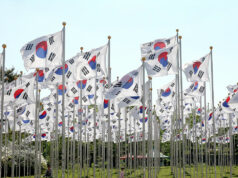Inflation now on a ‘target-consistent path,’ says Remolona

INFLATION is now on a “target-consistent path,” which provides room for further easing, Bangko Sentral ng Pilipinas (BSP) Governor Eli M. Remolona, Jr. said.
“With inflation now on a target-consistent path, we have room for a calibrated shift to a less restrictive monetary policy stance,” Mr. Remolona said in an interview with Global Finance magazine.
Headline inflation sharply eased to 1.9% in September from 3.3% in August. This was also the slowest print in over four years or since the 1.6% clip in May 2020.
This year so far, inflation has remained within the central bank’s 2-4% target range, except for the 4.4% spike in July due to higher electricity costs.
In the first nine months, headline inflation averaged 3.4%, which was also the central bank’s full-year forecast.
“In fact, about two months before our latest policy rate cut, our forward guidance already indicated that we expected to shift to a less hawkish monetary stance,” Mr. Remolona said.
The central bank kicked off its easing cycle in August with a 25-basis-point (bp) rate cut, bringing the benchmark rate to 6.25% from an over 17-year high of 6.5%.
“The cut in rates in August was driven by our projections of inflation and growth based on the latest data on domestic conditions. The timing of the Federal Open Market Committee’s (FOMC) actions did not play much of a role in our decision,” Mr. Remolona said.
The BSP chief also noted that cutting ahead of the Fed did not have any significant impact on the financial system.
“The reaction of financial markets to the BSP easing its policy rate earlier than the US Fed has been relatively muted, with the Philippine peso weakening only slightly versus the US dollar right after the recent policy decision and has since continued to appreciate,” he added.
However, Mr. Remolona noted that the BSP will “continue to monitor lingering upside risks to prices, including those coming from higher electricity rates and external factors.”
He earlier said that the Monetary Board can cut by up to 25 bps at each of its last two meetings this year, slated on Oct. 16 and Dec. 19.
GROWTH OUTLOOK
At the same time, Mr. Remolona said the economy was able to withstand the effects of high interest rates.
“Previous policy rate increases had some dampening effect on demand, including credit activity. Nevertheless, the impact of tight financial conditions was something the domestic economy could absorb — as indicated by sustained GDP growth and improving employment condition,” he said.
Economic growth will likely settle within the 6-7% target this year, Mr. Remolona added.
“The outlook for domestic output growth over the medium term is largely intact. With 6.3% growth in the second quarter, it would likely settle within the government’s target in 2024 as a whole… We expect growth to be supported by robust construction spending and the timely implementation of various government programs,” he said.
The Philippine economy grew by 6.3% in the second quarter, the fastest in five quarters or since 6.4% in the first quarter of 2023.
Meanwhile, the BSP chief noted the Philippine banking industry’s strong growth prospects.
“The country’s banking sector has been a reliable source of strength for the economy. Bank lending has consistently grown to support economic activities without compromising credit quality. We attribute this in part to prudent lending standards of banks,” Mr. Remolona said.
“We expect the trend of robust loan growth and good credit quality to continue in the months ahead.”
The latest BSP data showed bank lending rose by an annual 10.7% to P12.25 trillion in August from P11.07 trillion a year ago.
Mr. Remolona said that nonperforming loans (NPLs) are “very manageable.”
The banking system’s total loan portfolio was at P14.2 trillion at end-July, with NPLs accounting for 3.58%, he added. — Luisa Maria Jacinta C. Jocson



